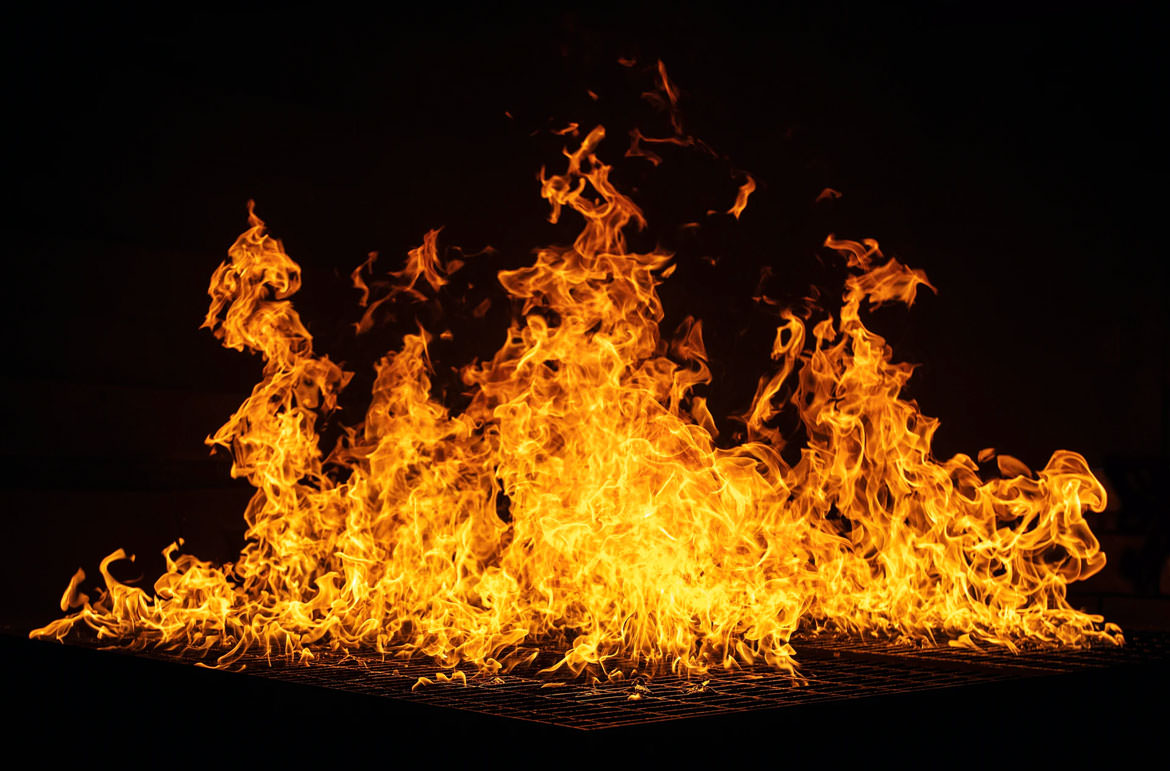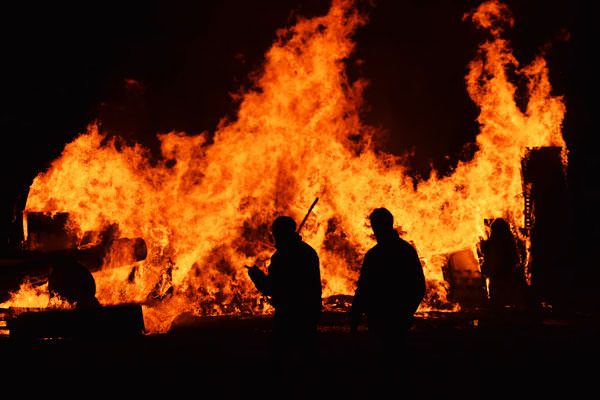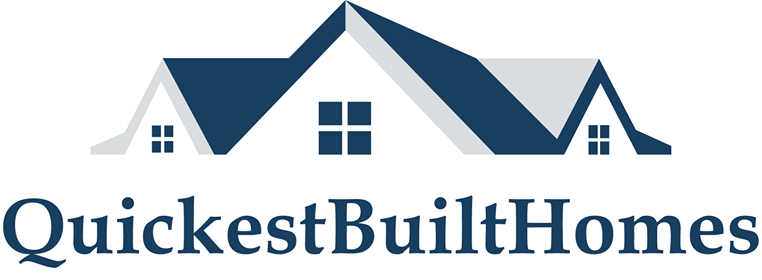
When planning your secondary dwelling, you may be asking; Can you build a granny flat in a flame zone?
Yes you can. However, there are strict guidelines about this regarding Bushfire Attack Levels (BAL)
To understanding building a granny flat in a bushfire zone, I had the privilege to chat with Kristan Dowdle an Ecologist and Bushfire Consultant to explain how it all works.
Kristan is a Bushfire Planning & Design (BPAD) Certified Practitioner (FPA Australia). His business Clarke Dowdle & Associates has been operating throughout NSW since 1989.
Kristen is a Partner of Clarke Dowdle & Associates servicing NSW
So, let’s get right into the common questions where fire zones are a concern.
What are BAL ratings?
The BAL stands “Bushfire Attack Level”.
They are outlined within an Australian standard called: “AS3959 2018 Construction Abilities in Bushfire Prone Area.”
BAL ratings range across 6 levels:
- BAL Low
- BAL 12.5
- BAL 19
- BAL 29
- BAL 40
- BAL FZ, which stands for “flame zone”
Now those numbers correlate to a predicted amount of radiant heat. So, for example, a BAL 12.5 rating equates to a construction level that is able to withstand 12.5 kilowatts of radiant heat per meter squared.
Are there certain building materials that are rated for each one of those bushfire attack levels?
The higher the BAL rating is, the higher specification or the higher the fire rating needs to be of a particular external building element.
When you start getting toward the higher bushfire attack levels, then your options become limited, because once you get above BAL 29, external timbers are no longer permissible for usage.
For the Lower BAL ratings there’s more options available for material usage.
It is important to mention when you get to BAL FZ and even BAL 40. It’s not just material but systems which need to be considered. For example, windows systems have had to be tested in order to comply with that level of BAL rating.
When it comes to New South Wales for instance, all decks are required to be made of hardwood, for BAL 12.5 up to 29. That includes bears and joists. This is when the deck is enclosed, (ceiling cover and railings.)
When you’re talking about timber external cladding of a granny flat, there’s different specifications from BAL 12.5 to BAL 29. You can use some soft timbers for external cladding at BAL 12.5 provided, it has to be greater than 400mm from a finished ground level or an outdoor deck level.
The reason is that debris (leaves and stick) could build up against the wall and could potentially ignite.
Kristan mentioned that you don’t have to worry about the frame of the granny flat. It’s all about your external finish.
The external cladding or system that you choose to use around the frame itself, this is what’s required to be fire rated.
The interface between the outside and the bushfire hazard itself. Think of it as the “skin” which wraps around the granny flat that is all important.
Who Governs the BAL Ratings?
The rural fire service governs The Bushfire Attack Levels (BAL) and they have a document was just enacted on the 1st of March this year called Planning for Bushfire Protection 2019.
Whilst planning for Planning for Bushfire Protection 2019 determines the BAL rating, “AS3959-2018 Construction of buildings and bushfire prone areas” governs the actually building requirement to comply with the BAL rating.
Now, in regards to the BAL ratings. The RFS do not allow secondary dwellings/secondary occupancies of where they’re going to exceed rating levels of over BAL 29.
That means granny flats (secondary dwellings) would not be approved by the Rural Fire Service, in areas governed by over BAL 29.
The simple reason for this is:
- You increase the occupancy of a site, and therefore you potentially increase the chance of loss of life.
Can you build a granny flat on land governed by a BAL 29+?
There are some situations where you can provide what they call a “performance-based solution”, but there has to be very strong justification for that and basically the 1st of March, those justifications are quite limited if not borderline impossible to achieve.
What is a Performance Solution?
A Performance Solution is something which allows for designs to pass approval which won’t comply with the specific BAL rating (say built for BAL 40 for instance).
However still demonstrate occupants in the dwelling will be safe.
For example; after an assessment by a professional they may conclude that flames will reach 40 KW per m2. But they won’t be much over that.
NOTE: It is basically impossible to use a Performance Solution these days to pass such a design.
The RFS is overly conservative in their approach. So they will always err on the side of caution, because we’re talking about saving lives here.
What to do if Building a Granny flat on Land under BAL 29?
if you’re paying to build a granny flat on a site and it’s being mapped as bushfire prone by council, you put an application in council on the consent of authority. They’re the ones who have the final say.
However, it’s up to their discretion if they choose to refer an application to the Rural Fire Service.
They don’t have to, but if they perceive it to be either a particularly high bushfire risk or it’s outside their area of knowledge, they refer off the RFS for their comment.
RFS get the application, provide their own assessment based upon what documentation they provide, which includes:
- The plans
- Any potential bushfire reports
The RFS then makes a determination and it comes back to council for final approval.
It is worth noting:
Council legally doesn’t have to do what the RFS says however, from experience they do
When dealing with low risk areas for BAL, if they’re pretty cut and dry – BAL 12.5, BAL 19 and sometimes BAL 29. The rural fire service is not involved with the application most of the time.
The rules are strict as lives are on the line when fire takes over
If a DA or CDC includes a bushfire report or meets the criteria and council agree that it meets their criteria. They will assess it in house and provide a BAL rating based upon information that’s supplied to them.
How long is a BAL assessment valid for?
A BAL Risk Assessment Certificate for a CDC is only vaild for 12 months.
However, under a traditional DA it is essentially until legislation changes. Generally, this will be at least 2 years.
After a new inquest to BAL ratings is completed and the findings of an inquest reported on, there may be some changes to legislation.
BAL ratings can naturally change over time.
Naturally, the distance you are providing from where you want to build the granny and where the supposed bushfire hazard is will change with the growth of vegetation for example.
The land around a proposed development may also change.
Fire runs up hills faster than is does on a flat plane or down hills so this impacts the final rating as well.
What is an Asset Protective Zone?
The asset protection zone (APZ) is the cleared and maintained distance between where you’re building to where the bushfire hazard is.
With regard to bushfire buffers and such, council has mapped areas they govern. If they map an area as bush, they then provide a buffer from that bush and if you’re within that buffer, you’re classified as bushfire prone.
And the buffer is dependent upon the vegetation. So if it’s a:
- Forest, anything within 100m is within the bushfire buffer
- Rainforest, it’s 30m.
- Grassland hazard, it’s 30m as well.
NOTE: “Forest” includes: dry forest and wet forest and is classified as category one vegetation. “Rainforest” is classified as category two vegetation and “Grasslands” is classified as category three vegetation. Hence lesser risk and only 30 meters around that area.
Can you build in an asset protection zone?
You can’t build a granny flat in the Asset Protection Zone (APZ) a granny flat, because the APZ is the key factor in providing that buffer for the bushfire hazard.
What is the 10 – 50 rule?
This is a rule stated by the Rural Fire Service which states you can remove any tree within 10 meters of an approved constructed building without council approval and under scrub up to 50 meters from houses
There is a mapping tool on the Rural Fire Service website that you can use.
You put in your address and see if your property is 10 – 50 applicable.
NOTE: This is only for vegetation that is on your land. You cannot use this land to start destroying vegetation that is outside the bounds of your property.
Can you build a Granny flat with a CDC if it is bushfire prone?
If your property isn’t mapped as bushfire prone, then it doesn’t need to be addressed for CDC approval.
If you’re mapped as bushfire prone, then you need to address the bushfire requirements to see what BAL rating you are.
This is where you need a BAL risk assessment certificate produced by a certified bushfire practitioner. And this is what contains the BAL rating.
NOTE: Bushfire prone mapping has nothing to do with a BAL rating. All it is, is it’s a trigger for assessment under the planning of bushfire protection legislation.
What Does it Cost to Get a Bushfire Report?
Broadly speaking for a compliant development application (CDC) of your granny flat, it ranges anywhere from $300 to $600.
For a Development Application (DA), it can range anywhere from $600 to a $1000, depending upon the site and all the other criteria that is involved.
Who can carry out and issue a Bushfire Report?
A bushfire planning and design certified practitioner (BPAD). They are governed under the Fire Protection Association of Australia. Only a BPAD Practitioner can issue a BAL risk Assessment Certificate for CDC.
For a Development Application depending on which council, anyone can undertake a bushfire report. Council do sometimes request a report for a qualified bushfire consultant however this is not always the case.
What work is carried out for a Bushfire Report?
- A plan is presented to the Certified Practitioner
- Analysis of aero photography is carried out
- Analysis of topographic mapping from local and state governments
- A physical visit to the property is arranged
- Analysis of the bushfire risk is carried out
- Analysis of the vegetation type
- Assessment of all the vegetation which exists
- Analysis of the land slopes around the proposed dwelling
- Determination of the Asset Protection Zone (APZ)
- Final determination of the Bushfire Attack Level (BAL) made
NOTE: A professional carrying out this work also needs to what the existing infrastructure is like, in terms of:
- Is there suitable access and egress, in and out of the property for Rural Fire Service fire trucks?
- Where are the supplies of water such as hydrants?
- Can additional water supplies be carried in is there room for them?
This brief description above summarises the work carried out.
What are your options if your land receives a BAL 29 or higher?
You may consider a house extension.
There is no restriction if you have a single occupancy house (primary dwelling) and you want to put an extension on.
Even if you are issued with a BAL 40 or BAL flame zone (FZ). It just means that the new development will have to be constructed to the corresponding BAL rating, be it BAL 40 or FZ.
NOTE: It doesn’t mean replacing windows and/or cladding or anything like that of the primary dwelling. It does mean you need to increase protection of the house in smaller ways.
So what does that mean?
Things like your existing fly screens that might be plastic and/or fiberglass, replacing those to metal.
If it already has metal screening, any vents and weep holes, they need to be screened. Basically, it’s trying to prevent the ability for embers to enter the house.
What about garages converted to Granny Flats?
No, in short. A garage or ‘under house’ conversion into a granny flat, means an addition of a secondary dwelling.
Even if the structure the granny flat will be built into already exists on the land. It will be classified as an addition of a secondary dwelling and not permissible. That’s what triggers the rule as opposed to being an extension with a primary dwelling.
Again, this is only is your land exceeds BAL 29.

Text or Call Eric Hansen
0407 683 779
or simply drop us a line for more information & Plans
